Pavilions are smaller and lighter structures built to serve multiple purposes: from pure decorative to statement-making, to convey a message or host events. Contemporary designers and architects use cutting edge technology and principles of sustainability to create their pavilion masterpieces.

Alex Haw of Atmos Studio, London, designed Playascape, a pavilion devoted to the Burning Man festival held in Nevada.
The plywood pavilion will be constructed from CNC-cut parts and present a semi-circular structure to echo the plan of Black Rock City, which is the temporary city erected for the festival. The steps will rise in an amphitheater, encouraging people to perform and interact with each other.
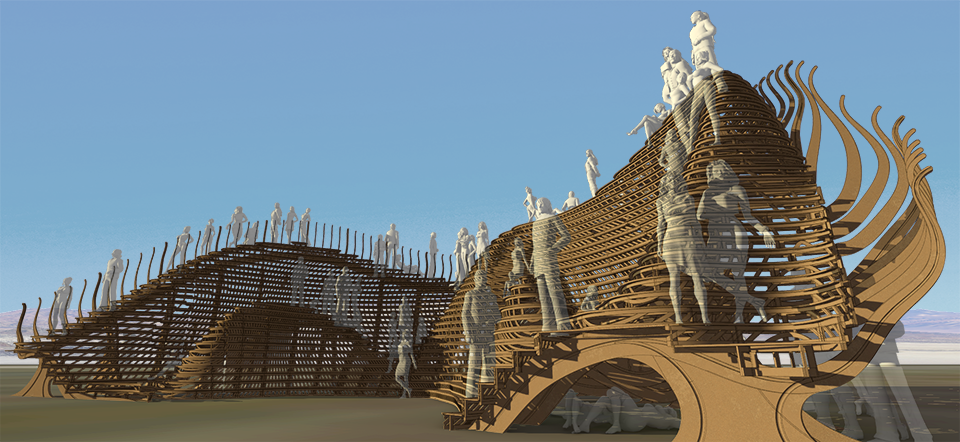
Playascape by Atmos Studio
The pavilion aims at grasping the essence of the event as a place of open-ended opportunity. It offers multiple gradients of steepness allowing guests to choose their own path of exploration and interaction with the pavilion and other visitors.
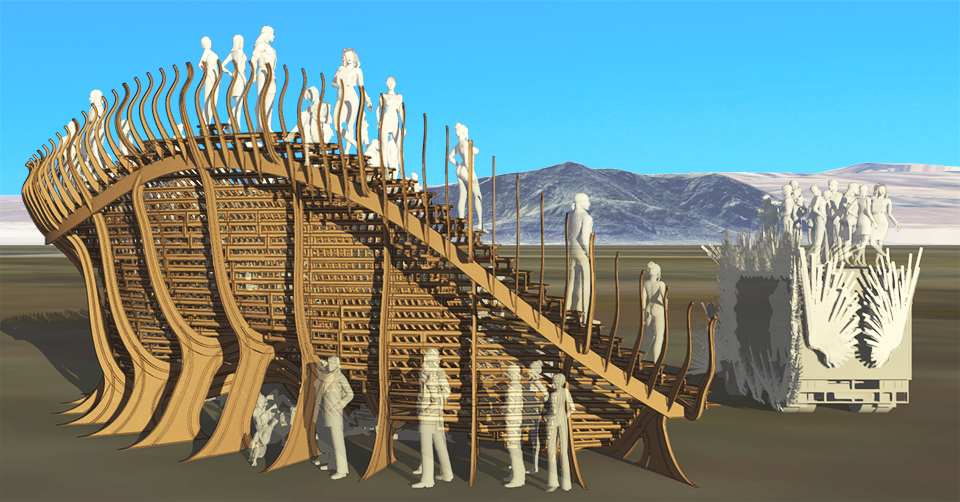
Playascape by Atmos Studio
Different by day, with its contemplative air suitable for mediation, and by night, with its interactive lighting, the pavilion will live its life during the festival and be disassembled and shipped to a non-profit sculpture park after it ends.
Director of London based Mamou-Mani, Arthur Mamou-Mani, has developed Conifera pavilion for the fashion brand COS.
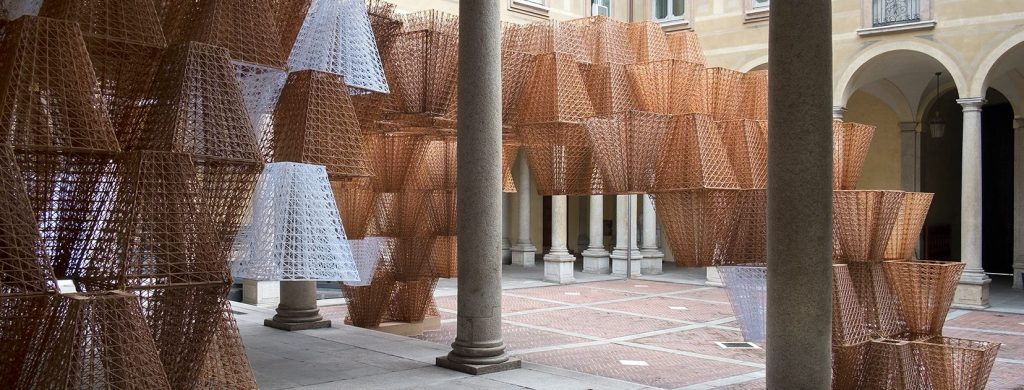
Conifera by Mamou-Mani
His creation was digitally fabricated from seven hundred interlocking modular bricks, 3D printed in a mix of wood and bioplastic, and assembled in the courtyard of a 16th-century palazzo in Milan.
Each bio-brick is made from fully compostable resources and printed in the form of interlocking structural lattices. The modules shift from a wood and bioplastic composite in the courtyard through to translucent bioplastic in the palazzo’s garden.
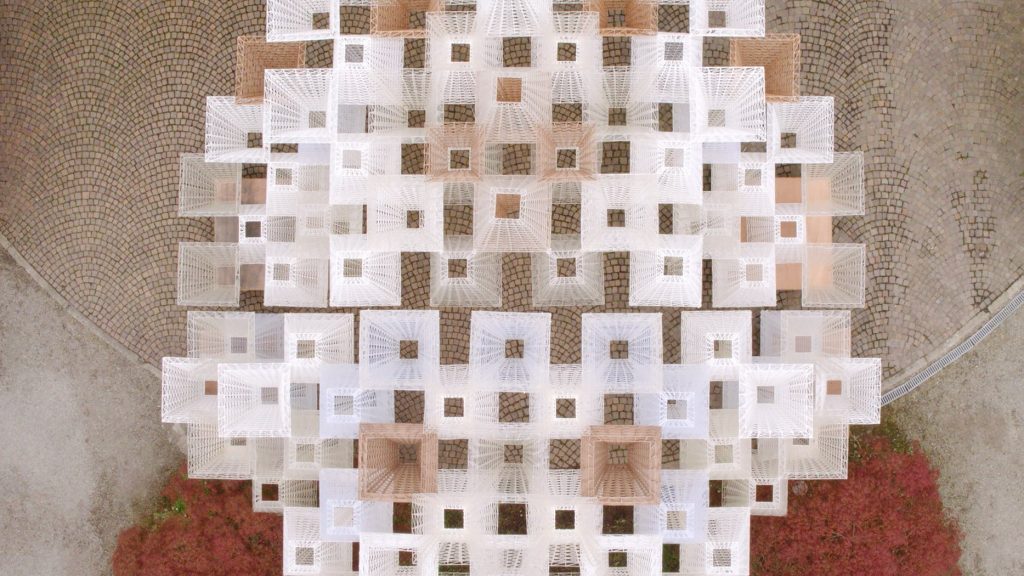
Conifera by Mamou-Mani
The installation’s name refers to the Conifer tree. Its wood was used to print the structure while the pinecones found on these trees served as inspiration for the design.
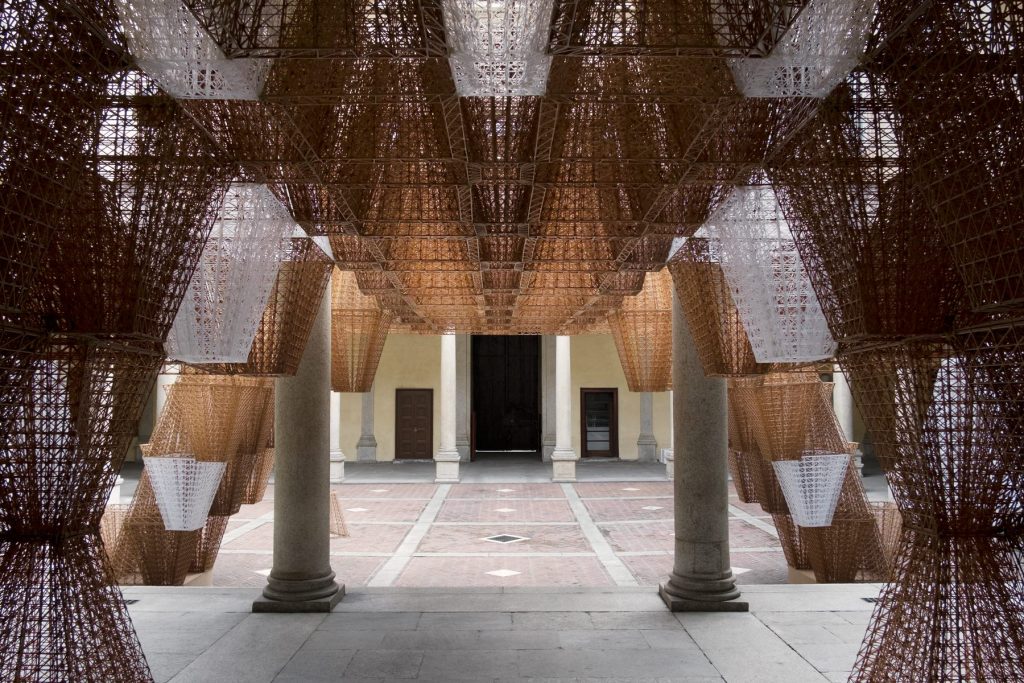
Conifera by Mamou-Mani
The message the architect conveys with his structure is that what really matters is what we do with technology in the light of helping the planet. He highlights the circular nature of the compostable material and showcases that renewable materials used in conjuncture with an algorithmic approach and 3D printing, can result in building blocks of the future.
The University of Stuttgart has also been exploring novel technology and methods in its BUGA Fibre Pavilion located in the wavelike landscape of the Bundesgartenschau grounds.
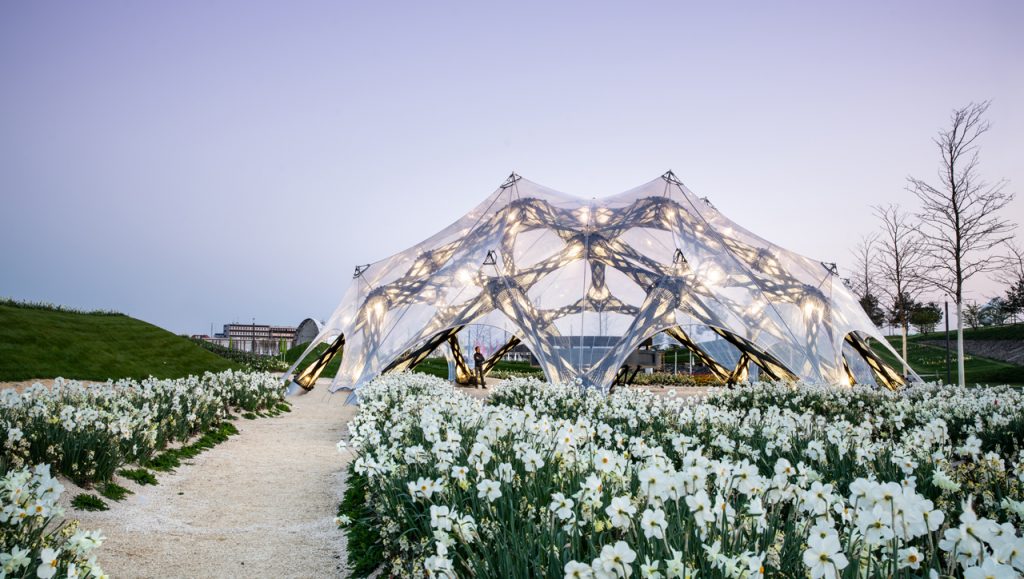
BUGA Fibre Pavilion by University of Stuttgart
The pavilion is an astounding architectural experience offering a glimpse into the future of construction: the structure, which had been impossible to produce just a couple of years back, is a representation of novelty digital building systems where cutting-edge computational technologies are combined with constructional principles found in nature.

BUGA Fibre Pavilion by University of Stuttgart
In biology most load-bearing structures are fibers, for example cellulose, chitin or collagen. And the pavilion’s load-bearing structure is robotically produced from advanced fiber composites only. It is uniquely highly effective and exceptionally lightweight, at the same time providing a distinctive yet authentic architectural expression.

BUGA Fibre Pavilion by University of Stuttgart
The pavilion is made from more than 150.000 meters of spatially arranged glass- and carbon fibers, all needed to be individually designed and placed. During the construction process, the predefined shape of the building component arises only from the interaction of the filaments, erasing the need for any mould or core and resulting in the absence of production waste or material off-cuts.
The pavilion, coving an area of some 400 square meters and rising more than 23 meters up is enclosed by a fully transparent, mechanically pre-stressed ETFE membrane.